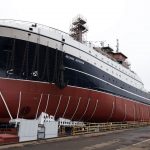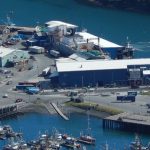According to a report scientists have argued that the use of catch shares in the management of commercial groundfish fishery off the coasts of Washington, Oregon and California is a good idea. The new catch limits system goes into effect from January 1, 2011 for managing commercial trawl fishing for 90 species of groundfish in federal waters off the coasts of Washington, Oregon and California.
The main aim of this system is to set catch limits by boat rather than for the fleet as a whole — makes good sense. Catch shares were first used around here for North Pacific halibut and black cod. The shares could be bought and sold. One big effect of this system was to shrink the fleet, as boat owners sold quota and left. With catch shares, the fishery supported fewer fishermen, but they worked more of the year and made a better living.
But this change in catch limits system is not welcome by a group of fishermen. One of their organizations has sued to block the change, arguing that it implicitly favors large boats, which it does. But there are environmental benefits of catching with larger but fewer boats. For the first time, each boat will have a government observer. Wasted fish will be counted against the boat’s quota, and the observer will have the authority to shut down fishing when limits are reached, including limits on the bycatch of protected species.








